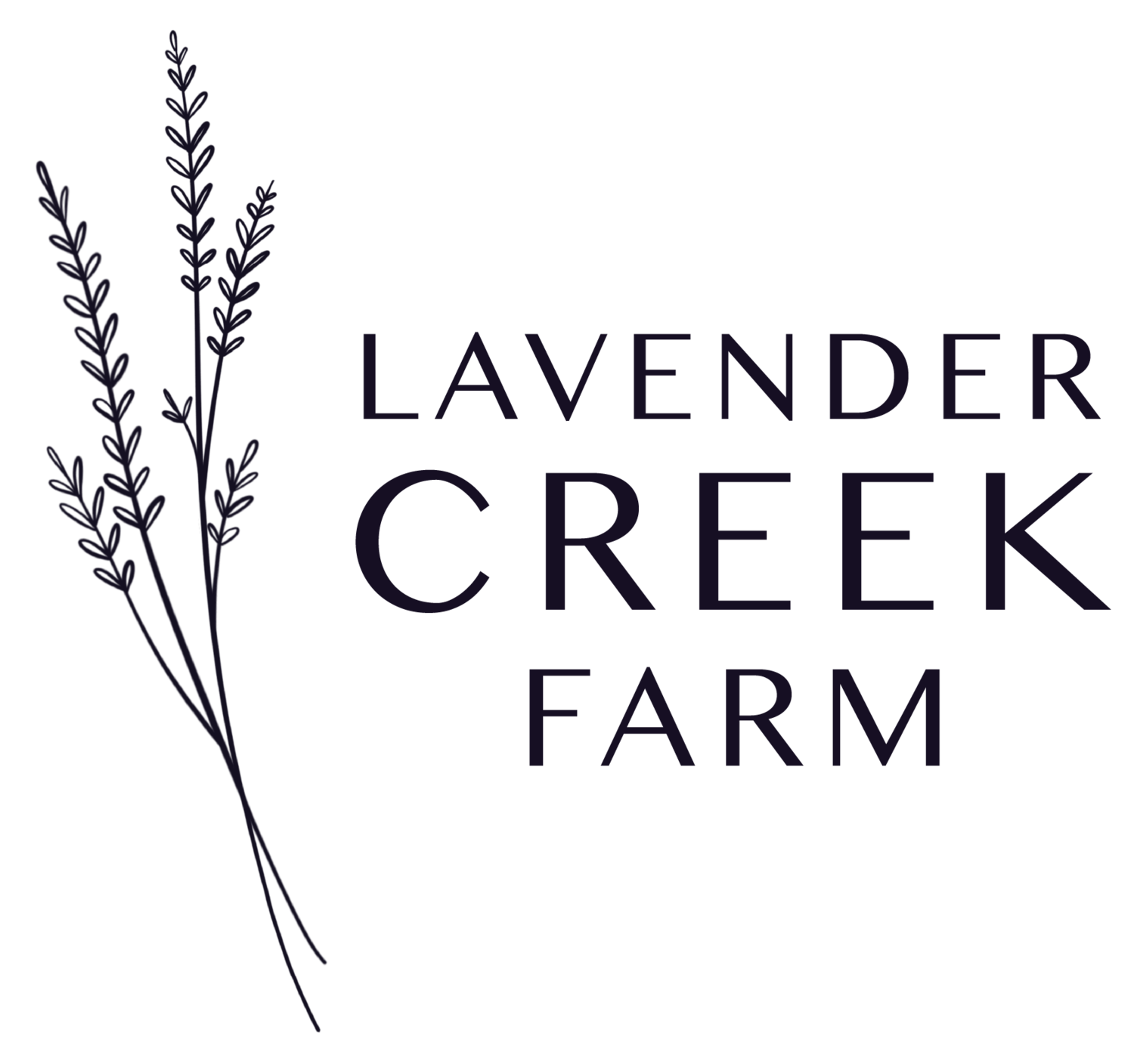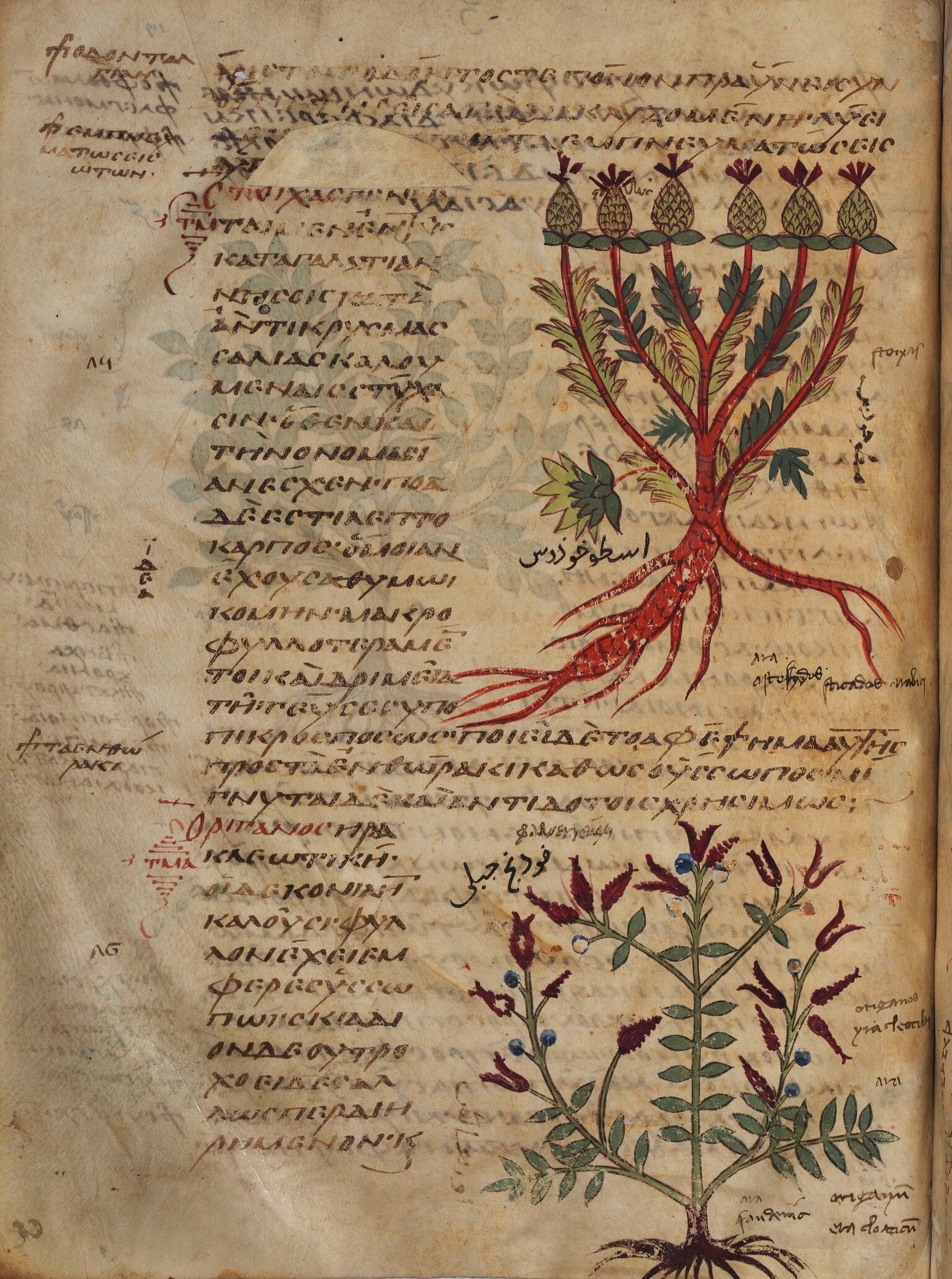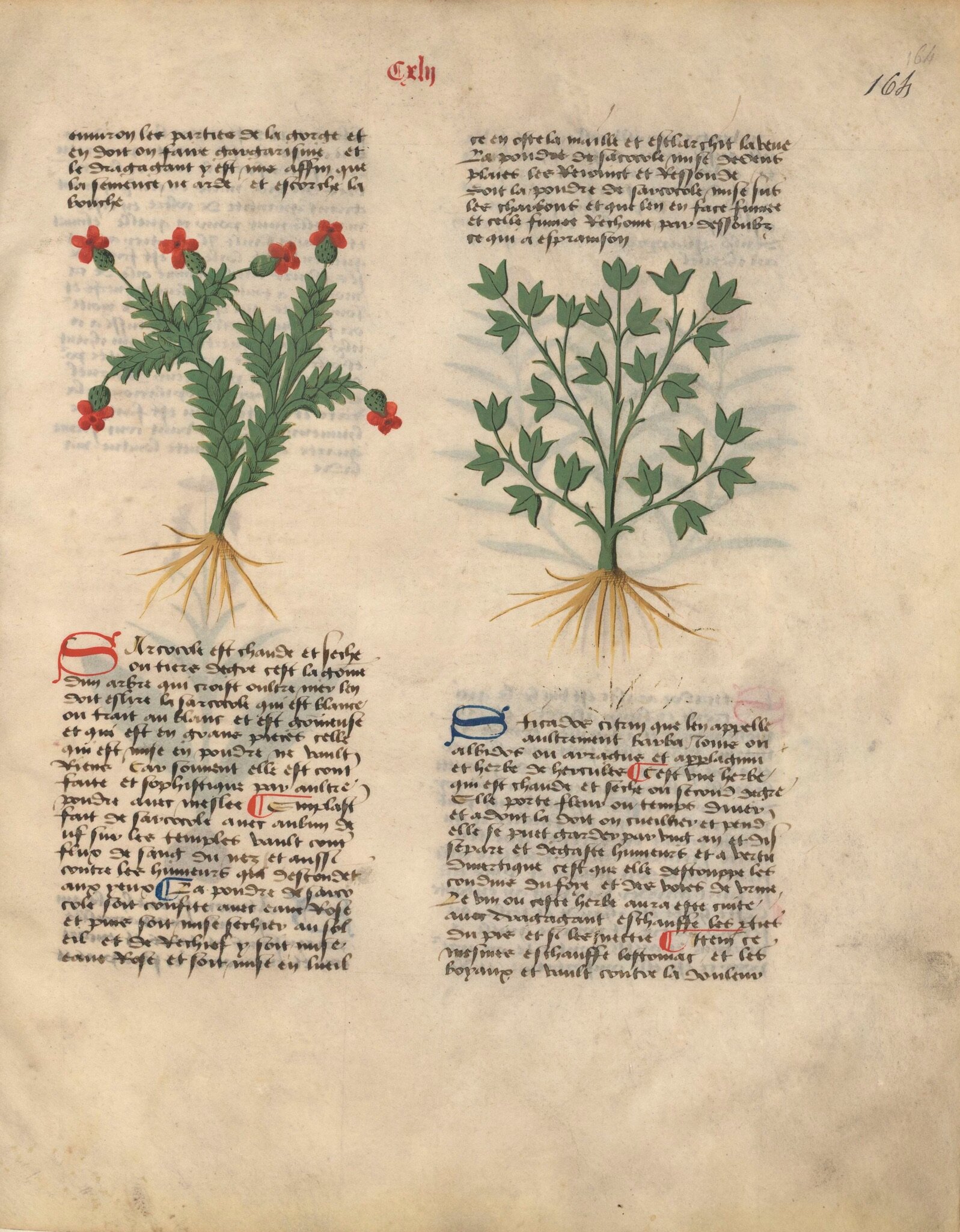Lavender in History
While Lavender was already known for its aroma and soothing benefits in Antiquity, it was particularly popular in the European Middle Ages. Many herbalists used lavender to try to cure stomach issues, insomnia, and other ailments. We have researched a few interesting medieval handwritten manuscripts for you that talk about lavender as medicine. Enjoy!
©Bibliothèque nationale de France, Grec 2179 fol. 19v
Here is an example of a handwritten medicine book written on parchment or vellum from the eighth century. It shows a lavender plant to be used for remedies such as stomach pain. It was produced in the region of Sinai or early medieval Palestine.
Particularly sought after in medieval times, Lavender is featured in many herbal treatises, which are essentially books of medicine. They were also called books of ‘simples’, a simple being a medicine composed or concocted of only one constituent, especially of one herb or plant.
©Bibliothèque nationale de France, fr.623 fol. 164
In this French Livre des simples medecines or Book of simple medicines, produced on animal skin in what is Belgium today in the fifteenth century, Lavender, actually called Sticados Arabic in medieval times, is described as an herb that is “warm and dry.” As it is stated in the manuscript, it should be heated to be used as a medicine and consumed as a mulled wine poured over a lump of sugar for taste. It is used to help with digestion as well as stomach pains and intestinal problems in general. (Disclaimer: this was 600 years ago, please do not use as medicine)
What is striking is that plant illustrations, such as the ones you see here, were copied from one manuscript to another with little alteration, relying heavily on the Greek and Arabic tradition. These books are essentially records of accumulated knowledge, both of plant lore and of folk medicine.
©Bibliothèque nationale de France, lat. 9474 fol.23
Even Queens were intrigued by the many properties of lavender, not just its aromatic scent. The Queen of Bretagne, France, Anne de Bretagne commissioned a beautifully illustrated prayer book for her personal use in the first years of the sixteenth century. Medieval prayer books frequently included information on other subjects, such as medicines, the zodiac, and so forth. In this particular case, you see that lavender, referred to as Aspic Lavandule is beautifully illustrated and praised for its medicinal attributes.
©Bibliothèque nationale de France, lat. 6823 fol. 139v
In this beautifully handwritten medieval manuscript of the Latin Liber de herbis or Book of herbs and plants, which was written in Pisa, Italy in the fourteenth century, you see the words Sticados Arabice in bright red ink to describe the lavender plant.
shop our store
Want some lavender for yourself? Shop our store with the link below!




